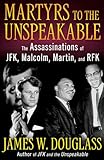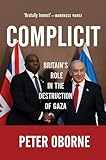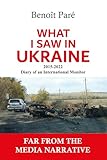“Familiarity,” wrote St. Augustine, citing a common saying of his time, “breeds contempt.” This is not always the case of course; sometimes familiarity brings admiration, even affection. But when two very different parties are forced upon one another — especially if one is occupier and the other occupied — the contempt can grow so deep as to prompt murder.
St. Augustine lived in the late fourth and early fifth centuries, in the Roman Empire. In that empire, occupied and occupier got to know one another all too well, from Britain to Mesopotamia (Iraq) where resistance forces forced a withdrawal Roman troops in 117.
Britons rose up against the Roman occupiers and their Queen Boudicca died fighting around 60 CE. (She’s quoted by Tacitus as determined to avenge “lost freedom, my scourged body, the outraged chastity of my daughters.”) Familiarity bred rebellion resulting in vicious Roman responses, including the suppression of multiple uprisings in Judaea from 66 to 135.
Familiarity bred contempt in India as well as British authorities recruited Indian soldiers into their army from the eighteenth century. The sepoys rebelled in 1857 in protest of promotion policies, pay and assignment issues, reports of Christian proselytization, and the rumor that the cartridges needed to load the soldiers’ rifles were greased with pork fat — a terrible offense to Hindu and Muslim religious sensibilities. The mainly upper-caste Hindu sepoys turned on their British trainers in a bloody uprising that led to the fall of what was left of the Mughal Empire and the transfer of authority from the East India Company to the British crown.
The U.S.A. is today’s Roman Empire and British Empire rolled into one. With its allies the U.S. invaded Afghanistan over 3,825 days ago. The vast majority of people in this country at the time regarded the invasion, less than a month after the 9/11 attacks, as a war “of necessity” provoked by those attacks. Even many usually progressive people passively accepted the need for a vindictive response. Those who dissented were treated as naïve at best, traitorous at worst.
The facts, as packaged by officials, seemed clear: the U.S. had been attacked by al-Qaeda; al-Qaeda was based in Afghanistan; the rulers in Afghanistan (the Taliban) had “sponsored” Osama bin Laden. So the Talibs needed to be overthrown, while the U.S. bombed and obliterated bin Laden’s camps.
But the U.S. wouldn’t just act in its own self-defense. It would also magnanimously liberate the oppressed Afghanis. The Bush administration posed as the champion of Afghan women in particular, depicting their plight (symbolized by the mandatory wearing of the burqa) as rooted in Taliban rule. (In fact, the burqa had been standard female attire in Afghanistan for hundreds of years, and has remained so since the Taliban were overthrown. One might hope that it will “vanish from the page of time” but that’s likely to require more than an invasion.)
In November 2001, in the opening stage of the war, Laura Bush took over for her husband in delivering the president’s weekly radio address. She told us that “ a regime guilty of “brutal oppression” of women was “now in retreat across much of the country, and the people of Afghanistan, especially women, are rejoicing.” The bombing missions ordered by her husband were bringing joy to the Afghan people!
Actually, while the bombing killed thousands of civilians, a lot of Afghans did welcome the overthrow of the Taliban and the establishment of a new regime. During the first few years, plausible public opinion polls showed fairly high support for Hamid Karzai, the CIA operative hand-picked by Washington to serve as president. The prospect of being aligned with the U.S., which had aided the Mujahadeen in their decade-long war against the Soviets, and receiving massive doses of U.S. aid for roads and schools, was attractive to some. (But then, the alliance with the USSR, and Soviet aid had been attractive to many Afghans from 1978. Afghanistan like most places contains diverse political forces with differing world views.)
As time passed, Karzai’s weakness and corruption became apparent. Gradually feelings soured, as warlords reestablished control over their former fiefs; as the national police acquired a reputation for abuses including the kidnapping and sexual abuse of children; as the Taliban and aligned movements resurged and capitalized on the dissatisfaction; as the bombings and drone strikes and night time raids on homes produced such anger that Karzai and the parliament began insisting they must stop — feelings soured. And U.S. public opinion soured on the Afghan War, validating the objections some of us had expressed at the outset.
The behavior of some foreign troops over the last year (collecting body parts as trophies, urinating on dead militants’ bodies, burning Qur’ans, the March 11 massacre of 16 Afghan civilians in Kandahar) may have brought us to the tipping-point.
The “Red Team” Study
The U.S. Army has long been concerned about the fact that its soldiers fighting to support the Karzai regime and contain the resurgent Taliban have a terrible relationship with the Afghan soldiers and police they’re obliged to work with and train. A “red team” headed by Jeffrey Bordin, a political and behavioral scientist, was dispatched to Afghanistan last year to investigate. (In the Army, a “red team” is supposed to “provide commanders an independent capability to continuously challenge plans, operations, concepts, organizations and capabilities in the context of the operational environment and from our partners’ and adversaries’ perspectives.” It’s supposed, in other words, to help commanders think outside the box.)
Bordin’s study, completed last May, is entitled “A Crisis of Trust and Cultural Incompatibility: A Red Team Study of Mutual Perceptions of Afghan National Security Force Personnel and U.S. Soldiers in Understanding and Mitigating the Phenomena of ANSF-Committed Fratricide-Murders.” It’s available online.
In the report, Bordin noted that there had been since September. 2009 at least 21 instances of “fratricide-murder incidents” in which Afghan National Security Force (ANSF) members killed 51 foreign troops, mostly U.S. forces, who had been sent to train them. (The toll has risen to over 80 since. About a quarter of foreign troops killed in Afghanistan this year — including three more on Monday, March 26 — have been killed by Afghan security forces.) He declared that the magnitude of the killings (referred to in U.S. military parlance as “green-on-blue” incidents) “may be unprecedented between ‘allies’ in modern history.” But why is there so much hostility between U.S. forces (and other foreign forces) in Afghanistan and the soldiers they’re supposed to train.
Bordin explained:
“Factors that fueled the most animosity included U.S. convoys not allowing traffic to pass, reportedly indiscriminant return U.S. fire that causes civilian casualties, naively using flawed intelligence sources, U.S. Forces conducting night raids/home searches, violating female privacy during searches, U.S. road blocks, publicly searching/disarming ANSF [Afghan National Security Forces] members as an SOP [standard operating procedure] when they enter bases, and past massacres of civilians by U.S. Forces (i.e., the Wedding Party Massacre, the Shinwar Massacre, etc.). Other issues that led to altercations or near-altercations (including many self-reported near-fratricide incidents) included [U.S. soldiers] urinating in public, their cursing at, insulting and being rude and vulgar to ANSF members, and unnecessarily shooting animals. They found many U.S. Soldiers to be extremely arrogant, bullying, unwilling to listen to their advice, and were often seen as lacking concern for civilian and ANSF safety during combat.”
(The “Wedding Party Massacre” refers to the incident in Nuristan Province in July 2008, when 47 people including 39 women and children were killed by a missile. The deputy speaker of the Afghan parliament stated that none of them had had any connection with either al-Qaeda or the Taliban. The U.S. initially denied that there had been any civilian deaths. The “Shinwar Massacre” refers to the March 2007 incident in which a U.S. convoy in Nangarhar Province killed 19 and injured up to 50 as they fired indiscriminately after a humvee was struck by a minivan laden with explosives that injured one Marine.)
According to the study, U.S. forces for their part held “extremely negative” views of the ANSF, finding among them “pervasive illicit drug use, massive thievery, personal instability, dishonesty, no integrity, incompetence, unsafe weapons handling, corrupt officers, no real NCO corps, covert alliances/informal treaties with insurgents, high AWOL rates, bad morale, laziness, repulsive hygiene and the torture of dogs. Perceptions of civilians were also negative stemming from their insurgent sympathies and cruelty towards women and children.”
Notice that both sides complain of the other’s treatment of women and children. But while the Afghans interviewed complained of specifics — foreigners observing women in a yard from a roof; breaking down a door to enter a female’s room; taking photos of women; searching them without reason; giving children candy even though their proximity can lead to them dying in attacks — the U.S. soldiers’ complaints were more vaguely expressed. “How they treat their women and children is disgusting,” said one GI. “They are just chattel to them.”
Both complain of the other’s treatment of dogs. But the Afghans complain that the U.S. soldiers kill dogs who belong to people — dogs on leashes outside people’s homes. They do it for sport, or to shut them up if they bark, even in the presence of their owners — one of whom according to this report joined the Taliban after his dog was shot to death. The GIs kill cattle and donkeys as well, say the Afghans. The U.S. troops for their part complain that the Afghans kill stray dogs. (Of course, there’s never any excuse to torture an animal, but isn’t it possible that Afghan society has traditionally controlled the population of feral dogs? Neighboring India has a huge population of pariah dogs, who are often rabid — over 70,000 in Mumbai alone. In that city they bite 25,000 people per year. They’re a real management problem most people in this country can hardly imagine. Perhaps this issue of feral dog killing can be seen as a “cultural” issue between the Afghans and the occupiers.)
According to Bordin’s report, U.S. troops in Afghanistan not only dislike and mistrust ANSF — for reasons that seem related to the Afghans’ habits and customs, poverty, and illiteracy (90% among the Afghan troops) — but also have “negative” views of Afghan civilians in general. This, he posits, is due to civilians’ sympathy with the insurgents and because of the “cruelty towards women and children” that occurs in Afghan society.
While the relationship between the occupiers and the people was beyond the scope of Bordin’s assignment, this observation is obviously significant. If the GIs see the Afghans in general — not just the insurgents, but ANSF (who allegedly form “covert alliances/informal treaties with insurgents”), and even the bulk of the population — so negatively, how can they ever mould ANSF into a viable military and police force, meeting their own expectations? How can they ever crush the Taliban and its allies, and win over the masses?
The Main Problem is Not a Culture Clash
“A Crisis in Trust” is a statistical study that tries to examine the recognized “green-on-blue” problem. But it misses the forest for the trees. The “factors fueling most animosity” are factors generic to invasions and occupations: the arrogance and condescension of the invaders; the insistence on regulating movement of people in the invaded country; the response to (real or imagined) attacks with overwhelming firepower that inevitably kills civilians; the need to recruit local, often unreliable snitches; night raids, etc. These have nothing to do with “cultural incompatibility” but with the arrogance of power bound to produce indignation. How ought Afghans to respond to such national humiliation? Should anyone be surprised that their indignation has mounted over ten-and-a-half years?
In what Bordin calls the “first tier” of Afghan complaints about U.S. troops is the charge that they are “extremely arrogant.” This is related to other “first tier” issues, specifically: night raids, disrespect for Afghan women, roadblocks, refusal to allow Afghan troops to pass U.S. convoys, indiscriminate shooting of Afghans following attacks, killing of many civilians, constant cursing (including calling Afghan troops “motherfuckers”—which is deeply resented), and publicly searching any Afghan soldier entering a U.S. base.
But how can the U.S. troops not be arrogant? Their basic training is designed to inculcate a sense of righteousness about their role. They’re conditioned to believe that they’re on a heroes’ mission to defend family and friends at home, and keep the U.S. safe from another 9/11 type attack. They need to do this by containing the Taliban resistance, which they’re encouraged to associate with al-Qaeda. (They’re also encouraged to associate the Taliban with Iraq and any “bad guy” Muslim force they might read about, including Gulbuddin Hekmatyar’s Hezb-i-Islami forces, Iran, Hizbollah, Hamas, Somali pirates, Gaddafi, etc. While they’re routinely told “We respect Islam” they’re also encouraged to see the world in simple “us vs. them” terms, and it just happens that all the enemies are Muslims.)
This simplistic “war on terror” mentality, pitting the “good” warrior against a vague, omnipresent Evil is a key aspect of the problem, for both them and the Afghans. The invaded population may be tradition-bound, largely illiterate, religious fundamentalists. But the invaders are fundamentally deluded about their mission. This is by design, part of the boot camp experience.
Things the Invaders Aren’t Supposed to Know
The troops aren’t briefed about the fact that the Taliban regime — bad as it was – had, and has, a considerable social base. It was preferred by many Afghans to the warlords of the Northern Alliance who are now back in power in much of the country. They’re not told that the Taliban is rooted in the anti-Soviet Mujahadeen of the 1980s which the U.S. eagerly supported, deliberately pitting Islamic fundamentalism against the pro-Soviet regime and its secularist policies. They don’t necessarily realize that U.S. policy helped generate the enemy they now face.
They’re not told that the Taliban took power in most of the country in 1996 with help from Pakistan’s Inter-Service Intelligence, which had worked intimately with the CIA throughout the 1980s. (As the late president Benazir Bhutto once noted in an interview, longtime U.S. ally Pakistan supported the Taliban because it seemed most likely to insure the stability of Central Asian trade routes.)
The troops aren’t told that the Taliban never invited bin Laden into their country. They’re not told that the U.S. agreed in 1996 to allow bin Laden to fly out of Sudan in a C-130 transport plane with 150 men, women and children on board, to refuel in pro-western Qatar (where he was greeted warmly by government officials) and to relocate to Afghanistan where he was welcomed and hosted by anti-Taliban chiefs. (He settled in Qandahar in May 1996. The Taliban only acquired control over Kabul that September.)
They’re not told that the Taliban once in power tolerated bin Laden’s presence and let him maintain his training camps (initially established with CIA help) out of appreciation for his assistance in the war against the Soviets when he was working with the U.S. (They also appreciated his financial assistance to them, at a time when only Saudi Arabia and Pakistan recognized their regime and provided aid, and felt obliged to observe the Pashtunwali code requiring hospitality for strangers.) But they never embraced his program for a global jihad. Indeed they claim that after the USS Cole incident off Yemen in 2000 they placed him under detention and cut off his communications.
U.S. troops aren’t told that Zalmay Khalilzad, the Afghan-American special envoy to Afghanistan in 2002, and later the ambassador to Afghanistan, then Iraq, then the UN — the man who arranged for Karzai to become president –had six years earlier actually written an op-ed supporting U.S. engagement with the Taliban!
“The Taliban does not practice the anti-U.S. style of fundamentalism practiced by Iran,” the former State Department official declared in the Washington Post in October 1996. “It is closer to the Saudi model.” He later, as a Unocal executive, hosted Taliban leaders at his Texas ranch to discuss a gas pipeline deal in the late 90s.
They’re not told that after the Taliban successfully banned opium cultivation in 2001, Secretary of State Colin Powell praised their effort and delivered $43 billion in aid to them. They’re not told that the Taliban not only sought good relations with the U.S. before 9/11, but even (as reported on Counterpunch) agreed to turn bin Laden over to the U.S. as early as November 2000. It was willing to do so unconditionally after the 9/11 attacks, but the U.S. government never accepted the offer.
(The Taliban issued a statement on September 12, 2001: “We do not allow Osama bin Laden to use Afghanistan’s territory to launch attacks on any country in the world… We denounce this terrorist attack, whoever is behind it.”)
The troops aren’t told that the current U.S.-backed president Karzai was briefly the foreign minister of the Taliban government (in 1996) and that he still insists there are “good men” among the Taliban. He’s even offered to welcome Taliban chief Mullah Omar to Kabul for negotiations. In 2008 he appealed to Taliban chief Mullah Omar “to return home under guarantees of safety to help bring peace to Afghanistan.” The U.S. sternly objected, prompting an indignant public statement from Karzai that the U.S. had no veto rights on inter-Afghan matters.
The troops aren’t told that none of the 9/11 hijackers were Afghans and that only two of them were known to have ever been in that country at any point for any reason. They’re certainly not told that Attorney General John Ashcroft spoke falsely when he told a press conference after 9/11 that all of the hijackers had been trained in Afghanistan.
U.S. troops aren’t told that many — maybe most — Afghans aren’t even aware of the 9/11 attacks on the U.S. (A 2010 study showed that 92% of people in the Pashtun south have never heard about them!) And even if they learn about them, they don’t understand why they would justify the invasion and occupation of their country. It’s not hard to understand why many would assume that the invaders are waging a war on their religion.
U.S. soldiers are encouraged to believe the Taliban and al-Qaeda are closely connected, if not one and the same thing. But this is simply untrue. The Taliban is an inward-looking, Pashtun-Afghan nationalist movement. It wants to impose a version of Muslim law upon a country torn by war since 1978. But it’s shown no interest in joining an international jihad. It merely wants to do what Afghan resistance movements have done from the time of Alexander the Great (which, by the way, was a millennium before the introduction of Islam). It wants to drive the invader out.
Al-Qaeda, now based in Pakistan and Yemen, is actively promoting a global confrontation between Islam and the West. But the Taliban has repeatedly declared it will not allow attacks on other countries from Afghan soil when/if it regains power. (And again it has consistently stated it had no knowledge of al-Qaeda plans while bin Laden was in the country.) Intelligence officials in Pakistan have stated that the Taliban has broken with al-Qaeda and would, if returned to power, crack down on any remnants of the organization in the country.
The U.S. troops are not mainly in Afghanistan to prevent al-Qaeda from making Afghanistan its base for a global jihad. It’s unlikely that, even if the occupying forces withdrew tomorrow, this decentralized web of groups of unknown size, with franchises and affiliates in Algeria, Yemen, Pakistan, Uzbekistan and elsewhere, would be able to transform Afghanistan into a headquarters for launching attacks on the U.S. (Anyway, weren’t the 9/11 attacks planned more in Germany and Florida than in Afghanistan?)
The foreign troops are not in Afghanistan to fight al-Qaeda, or anyone connected to attacks on the U.S. They’re, rather, to create and leave behind, whenever they leave, a “stable” country with a friendly regime, an effective security apparatus that will contain any “Islamist” forces the U.S. regards as potentially threatening, allow the presence of half a dozen U.S. military bases in the country (close to Iraq, Pakistan and Iran) and cooperate in the construction of a pipeline that will bring Caspian natural gas to the Indian Ocean. (The latter is of major geopolitical importance to Washington since most gas from the region is now piped through Russia, and the U.S. wants a pipeline that also avoids Iranian territory.)
Some of the troops have come to question their mission. Some have even been radicalized by their Afghan experiences and have become antiwar, anti-imperialist activists. But few fully grasp that they’re imperialist invaders, and so receiving the same treatment the Soviets experienced in the 1980s when they tried to occupy Afghanistan. So they cannot understand why the Afghan soldiers they’re supposed to train are so unenthusiastic, and why in general the people are so unwelcoming and unappreciative.
According to the Red Team study, most soldiers’ “perceptions of civilians” are “negative stemming from their insurgent sympathies.” But wasn’t this the case in Vietnam and Iraq as well? Or for that matter the Philippines from 1899 to 1902? Weren’t U.S. soldiers conditioned to expect warm receptions shocked to find the local people so cold and so prone to support the “enemy” instead of themselves?
The Sgt. Robert Bales Case
No one wants to be in a foreign country, asked to accomplish the impossible, surrounded by sullen people who find you rude and vulgar and want you to leave. Staff Sgt. Robert Bales surely didn’t.
Bales, relocated over Afghan objections to Ft. Leavenworth, Kansas, is accused of going on a rampage the evening of March 11 in Panjwai district in Qandahar, the birthplace of the Taliban. He’s been charged with the premeditated murder of 17 Afghan civilians.
According to some reports, a roadside blast in the village of Mokhoyan, blew off the leg of one of Bales’ buddies on March 7 or 8. Villagers say U.S. troops rounded up all the adult males in the village, lined them up against a wall and told them they would “pay a price.” It’s, of course, not clear that this alleged incident influenced Bales’ subsequent actions in two villages. But the “Qandahar Massacre” may be the worst, clearest instance of a soldier to date expressing “negative perceptions of civilians” due to their “insurgent sympathies.”
Bales has his sympathizers, who see him as the victim of repeated deployments in places where U.S. soldiers confront resentful populations. They see him as someone who just “snapped” at a certain point, such that he decided to march off and shoot Afghan women and children, and burn their bodies. “I kind of sympathize for him,” a former neighbor told AP, “being gone, being sent over there four times. I can understand he’s probably quite wracked mentally, so I just hope that things are justified in court. I hope it goes okay.”
This is entirely in the tradition of unconditional “support for the troops” deeply entrenched in our culture. There was widespread outrage in this country when Sgt. William Calley was convicted of mass murder of Vietnamese in 1971. Georgia governor Jimmy Carter established “American Fighting Man’s Day” and urged Georgians to show Calley support. The governor of Indiana asked that all state flags to be flown at half-staff for Calley, and many states’ governors protested the verdict and demanded clemency. How, they wondered, could the U.S. court system persecute a hero-soldier who, fighting for his country and for freedom, just happened to slip up a little on the rules and kill between 22 and 500 Vietnamese civilians?
But Laura King, in the LA Times, takes the opportunity to assert a high American standard of morality, juxtaposing it against an Afghan one. “In American minds, “ she writes, “the moral distinction between the accidental and the deliberate, between the carefully judged risk and the deranged act, is incalculable. But for Afghans, the result — the shrouded bodies, the wailing relatives, the bite of shovels into dusty ground — speaks to the numbing sameness of unexpected and violent death.”
In other words, the “American mind” is highly moral, and while forgiving episodes of Accidental “collateral damage” it recoils in disgust at any deliberate act of terror. King seems to echo Bales’ own words to a home-town reporter in 2007. The soldier after an Iraq deployment expressed contempt for anyone who would put “his family in harm’s way,” adding “I think that’s the real difference between being an American as opposed to being a bad guy.” For this accused mass-murderer, Americans are, by definition, “good guys.”
Whatever her intentions, King’s piece seems almost an apologia for U.S. imperialism. U.S. citizens as “their” forces invade maintain this “incalculable moral distinction” between what the soldiers do deliberately and what they do by accident. But the poor natives are unable to distinguish between “the numbing sameness” of the accidental killing of civilians (the “collateral damage” of airstrikes or roadblock incidents) and the occasional deliberate targeting of civilians.
Isn’t the point that the invasion itself was a very deliberate event? A crime against peace? And that such invasions usually produce these sorts of results?
“End of the Rope”
Ekil Hakimi, the Afghan ambassador to the U.S., told CNN recently that Bales’ rampage was “not the first incident; it was the 100th, the 200th and 500th incident.”
Hakemi is very much in the pro-U.S. camp. And yet even he complains to the U.S. mass media that the U.S. is routinely slaughtering civilians in his country.
The Afghan parliament has voted — unanimously! — to withdraw from the existing military agreement with the U.S. in protest of the removal of Bates from Afghanistan and the Afghan legal process. The legislators (even though they obtained their own positions as a result of foreign occupation) see it as an insult to the nation. Karzai probably won’t sign the law; he is, however much he postures as a nationalist, dependent on U.S. aid to secure his own position. But isn’t it significant that even a parliament established under U.S. hegemony, excluding any Taliban forces, favoring the warlords grateful for U.S. support, is making such a statement?
Meanwhile Karzai’s demanding that foreign troops withdraw from villages and return to their bases, declaring U.S.-Afghan relations “at the end of their rope.” These are surely positive developments
Some of those most closely aligned to the U.S. in Afghanistan are saying: Please go away. We don’t like you. Even if we once did, we don’t anymore because you’ve killed too many of us, and insulted and offended us in too many ways. You have overstayed your welcome in our country.
And the U.S. troops are saying: We don’t like these people, and we’re shocked by their ingratitude and hostility.
Of course, mutual animosity shouldn’t generally be a cause for celebration. But mutual animosity between occupied and occupier is normal, and certainly (as Mao Zedong put it) “it’s right to rebel” against oppression. And don’t the host of Afghan grievances cited by Bordin constitute oppression?
At this point the level of animosity has become impossible to conceal with cheery reports of “progress” such as that delivered to Congress by Gen. John Allen, commander of NATO forces in Afghanistan, earlier this month. Fallout from the Qandahar Massacre is causing some to predict or urge a speedy pullout. Retired General James A. Marks, senior Army intelligence officer at the time of the Iraq invasion, has said it “not inconceivable” that that massacre might prompt a U.S. withdrawal “in weeks.”
The My Lai Massacre helped turn U.S. public opinion decisively against the Vietnam War, and so maybe we can say that Calley’s victims did not die entirely in vain. The silver lining to the Qandahar Massacre might just possibly be an early withdrawal from Afghanistan. Optimally, these episodes reflecting mutual contempt in Afghanistan might actually bind people in both Afghanistan and the U.S. together — in revulsion towards imperialism.










